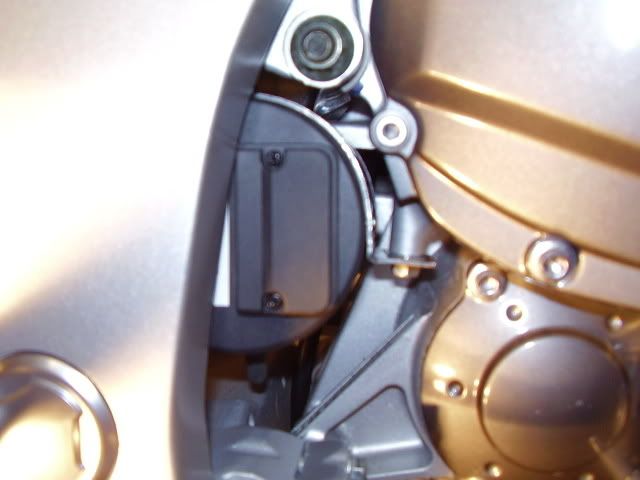UselessPickles
Making Grand Canyon replicas from air boxes...
I'm about to get started installing an Audiovox cruise control on my 2008 FJR A and need clarification on some details even after all my searching.
Here is my primary source of info that I will use to guide my installation: https://www.fjrforum.com/forum//index.php?showtopic=16440
1) I remember there being quite a big deal about some cruise units not working properly. I also remember reading that the final solution was to change the position of one of the dip switches on the servo unit. I cannot find this info now. Can anyone confirm the the correct dip switch settings?
2) I like the location that Smitty discovered for placing the servo unit on AE models: under the gas tank and behind the coolant pipe (https://www.fjrforum.com/forum//index.php?showtopic=14483). Is there anything important I should know about installing in this location? Is there any negative side to this other than the extra time spent installing (I've got all winter, and my bike is already completely stripped down for farkling!). From Smitty's pictures, I don't see how the servo unit is secured in place. Is it secured at all?
3) Has there been a final answer to the debate of whether to connect to the vacuum from just one cylinder or from all 4, or is that NERPT material?
4) Any important info that is more current than the referenced threads or was not mentioned in the referenced threads would be greatly appreciated.
--------------------------------------------------------------------------------------------------
UPDATE: The answers I have gathered are listed below.
--------------------------------------------------------------------------------------------------
1) Set the 7 dip switches inside the servo unit as follows:
2) No known problems with installing the servo behind the coolant pipe; just a little extra work (be careful not to lose/damage the o-rings for the coolant pipe). No need to secure the servo because it's tight in there anyway.
3) NERPT! Do as you please and be prepared to make changes if you aren't happy with its operation. I'll be tapping into all 4 cylinders with a check valve on each one. I like the symmetry of it for more balance and continuous vacuum.
4)
Here is my primary source of info that I will use to guide my installation: https://www.fjrforum.com/forum//index.php?showtopic=16440
1) I remember there being quite a big deal about some cruise units not working properly. I also remember reading that the final solution was to change the position of one of the dip switches on the servo unit. I cannot find this info now. Can anyone confirm the the correct dip switch settings?
2) I like the location that Smitty discovered for placing the servo unit on AE models: under the gas tank and behind the coolant pipe (https://www.fjrforum.com/forum//index.php?showtopic=14483). Is there anything important I should know about installing in this location? Is there any negative side to this other than the extra time spent installing (I've got all winter, and my bike is already completely stripped down for farkling!). From Smitty's pictures, I don't see how the servo unit is secured in place. Is it secured at all?
3) Has there been a final answer to the debate of whether to connect to the vacuum from just one cylinder or from all 4, or is that NERPT material?
4) Any important info that is more current than the referenced threads or was not mentioned in the referenced threads would be greatly appreciated.
--------------------------------------------------------------------------------------------------
UPDATE: The answers I have gathered are listed below.
--------------------------------------------------------------------------------------------------
1) Set the 7 dip switches inside the servo unit as follows:
- on
- off
- off
- on
- off
- off
- off (It used to be recommended on, but the switch to off fixed problems)
2) No known problems with installing the servo behind the coolant pipe; just a little extra work (be careful not to lose/damage the o-rings for the coolant pipe). No need to secure the servo because it's tight in there anyway.
3) NERPT! Do as you please and be prepared to make changes if you aren't happy with its operation. I'll be tapping into all 4 cylinders with a check valve on each one. I like the symmetry of it for more balance and continuous vacuum.
4)
- Remove as much slack in the servo cable as you can and set the throttle cable slack per FSM, erring to the short side of the adjustment.
- Be sure to water proof the button switch pad if you do a typical install.
Last edited by a moderator:





















































